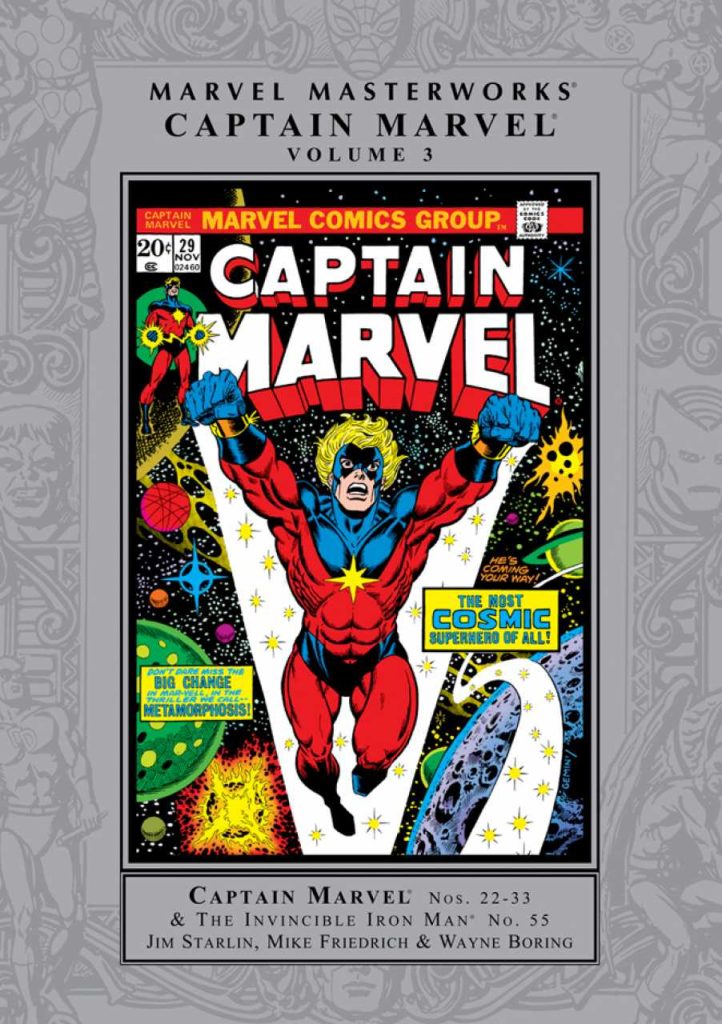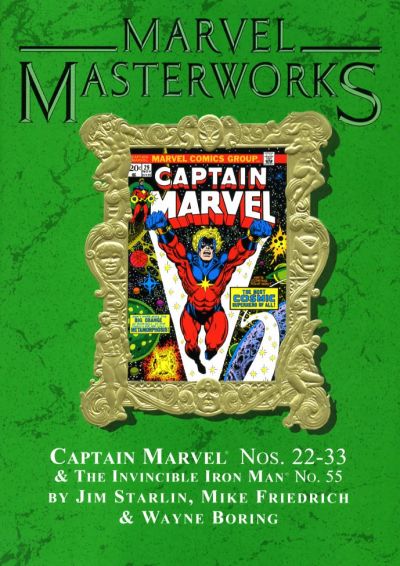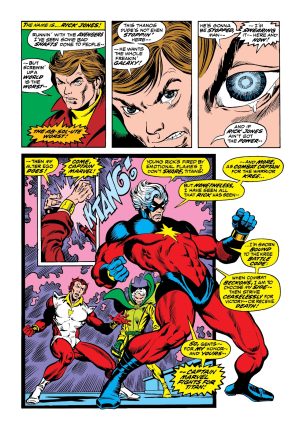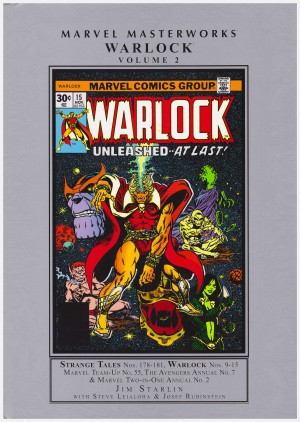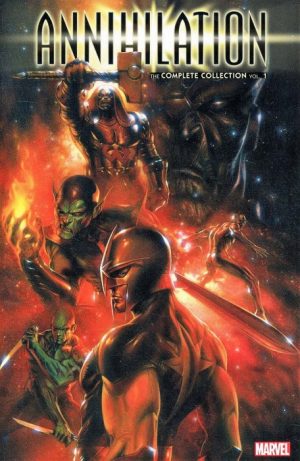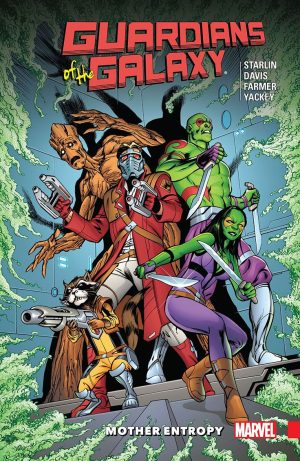Review by Frank Plowright
By the time of this material from 1972 Captain Marvel was five years into a career punctuated by changes of creative personnel and changes of direction. There seemed to be just about enough readers to sustain a comic, although not without pauses and cancellations, but superstardom wasn’t on the agenda.
The first story reprinted here came after another pause in publication from the tale ending Volume 2. and with the best will in the world a coasting Gerry Conway and disappointing art from Wayne Boring wasn’t the way forward. Two further chapters pairing Boring with Marv Wolfman have even less spark. No, the material of interest is all produced by Jim Starlin, then starting his career. However, while there’s a enthusiasm, energy and a creative vision to expand Captain Marvel’s horizons well beyond Earth, introducing the wonder of the cosmic in a way Silver Surfer never did, it’s also Starlin learning on the job. He’s not yet mastered compact storytelling, and while his art is an energetic fusion of Jack Kirby and Gil Kane, it’s inconsistent, and some poses he twists characters into look painful rather than dynamic.
Because he was learning, and because Starlin paved the way for much better versions of the cosmic epic, both the sheer ambition and the freshness of 1972 have been diminished by time. Starlin actually introduces Thanos and Drax the Destroyer in an issue of Iron Man, also supplied here as thematically connected, and back in the day Thanos’ genocidal intentions were unlike anything seen at Marvel. A menace of such proportions requires the involvement of the Thing, and the Avengers, while the human perspective is maintained by Captain Marvel still sharing a body with Rick Jones. Only one of them can manifest physically at a time.
By midway through his epic Starlin jettisons scripter Mike Friedrich, although his dialogue can be equally florid, has the confidence to introduce metaphysical confrontation, and has settled on a visual consistency. He still hasn’t come to terms with drilling down to the essence of a story, so a battle with the Controller may supply some powerful combat art, but isn’t greatly necessary, and as Roy Thomas points out in the introduction, the final showdown with Thanos is delayed too long.
An issue of The Avengers tying in to the threat of Thanos is mystifyingly absent, possibly for being the work of other creators, as is a teaming of Iron Man and the Thing that is by Starlin, does tie in and is presented in other collections (see below). Over the final couple of chapters Starlin coalesces into the creator he’d be going forward. He introduces concepts well beyond the standard superhero battle, his art has become as ambitious as his writing and future achievements beckon. Despite all that, though, Starlin’s Captain Marvel points the way forward to what would be achieved with Warlock, rather than still standing proud in its entirety decades later. Steve Englehart scripts the final chapter, and would take the series forward from Volume 4.
As genuine landmark in Marvel’s evolution, Starlin’s work on Captain Marvel is available in numerous other collections. Essential Captain Marvel Vol. 2 supplies it in black and white, while colour is restored for The Life of Captain Marvel, The Life and Death of Captain Marvel, and the identical Captain Marvel The Complete Collection by Jim Starlin. More puzzlingly, it’s also around half of Avengers versus Thanos.
